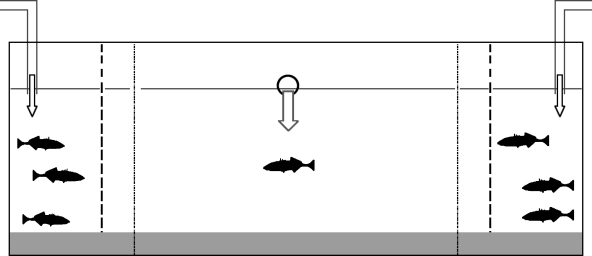Figure 1.
The binary choice tank used in parts 1–3 of this study measured 45 cm×17 cm×18 cm deep with a water depth of 15 cm. At each end of the tank along its longest axis was an 8 cm wide stimulus chamber, separated from the central section of the tank by screens of colourless perforated plastic (perforation diameter 0.1 cm, 5±1 perforations cm−2). This allowed the exchange of both visual and chemical cues. A 2 cm deep substrate of coarse sand was provided in the central section of the tank and in the two stimulus chambers. On the outside of the glass, we marked two association zones, indicated by vertical black lines, 2 cm from each of the stimulus chambers. This distance falls well within the range of inter-individual distances seen in free-ranging fish shoals (Pitcher & Parrish 1993). The number of stimulus animals added to each stimulus chamber and the experimental treatments to which they were subjected are described in §2d–f. The experimental tank contained fresh water obtained from the recirculating laboratory supply. Water from the same source was pumped into the centre of each of the two stimulus chambers at a rate of 20 cm3 min−1 and allowed to drain out of an overflow outlet located at the waterline at the centre of the rear wall of the tank. This served to carry chemical cues from stimulus animals from either compartment into the central section of the tank where the focal animal was held. Two test tanks were set up and used alternately between trials.

